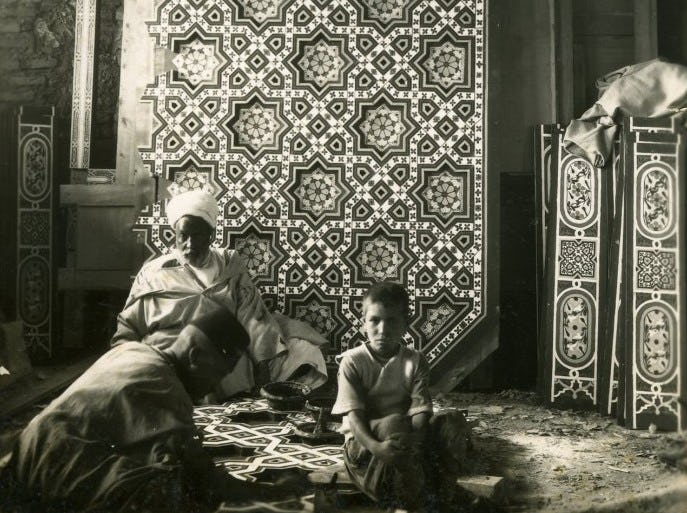Polychrome Tile Panel with Medallions and Trees
Date17th century
PeriodSafavid
MediumCeramic, polychrome pigments
DimensionsOverall: 55 3/8 x 74 3/8 in. (140.7 x 188.9cm)
ClassificationsCeramics
Credit LineCourtesy of the Doris Duke Foundation for Islamic Art
Object number48.84.2
DescriptionThis tile panel (one of a pair) is assembled from individual painted tiles depicting diamond- and trefoil-shaped medallions embellished with floral designs and leaves in the saz style (with serrated edges). The medallions are flanked by flowering trees with twisted trunks, and the white ground is filled with flowering plants. The double border is lined with a floral scroll and blue and yellow crenellations. This tile panel was purchased from a home in New Julfa, an Armenian suburb of Isfahan, Iran. The fifth ruler of Safavid Iran, Shah ‘Abbas I (r. 1588-1629 CE) relocated the Armenian population of Julfa in present-day Azerbaijan to the suburb of Isfahan. The Armenian immigrants were an essential asset to the Safavids, controlling the trade in silks. New Julfa soon became a bustling center with its own market places, bath houses, public buildings, workshops, and churches.
As in contemporary Islamic buildings, the Armenian residents of New Julfa incorporated painted ceramic tiles into the architectural designs of both religious and secular buildings. A combination of Armenian and Safavid aesthetics can be found within the interior of the churches of New Julfa; vivid frescoes depict scenes with Christian themes, while painted tiles in the Safavid style line the dado (lower walls).
On View
On viewCollections
17th century
17th century
17th century









